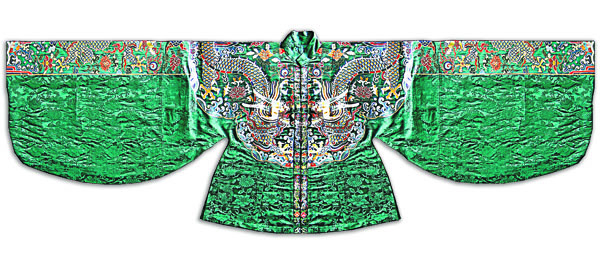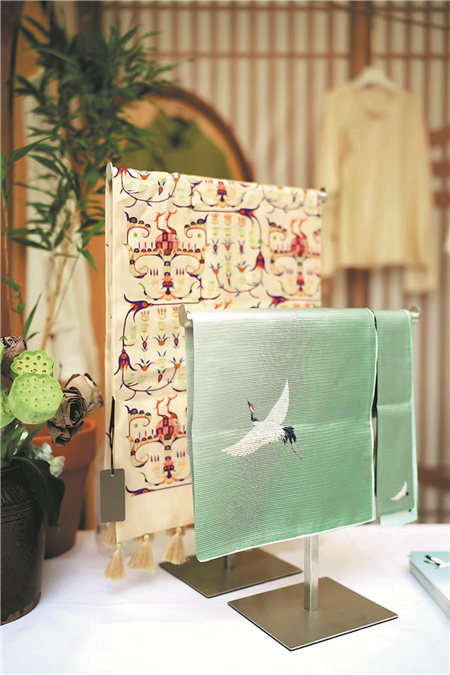The Fabric of Chinese Culture

The Nanjing Yunjin Research Institute adopts yunjin technique in replicating cultural relics, including a garment that belonged to an empress from the Ming Dynasty (1368-1644). [Photo provided to China Daily]
Silk has always been interwoven with the nation's history, and the textiles that employ the fine material remain sought after the world over — arguably, none more so than hangluo gauze, Xu Haoyu reports.
Editor's note: There are 43 items inscribed on UNESCO's Intangible Cultural Heritage lists that not only bear witness to the past glories of Chinese civilization, but also continue to shine today. China Daily looks at the protection and inheritance of some of these cultural legacies. In this installment, we admire a much-coveted textile that threaded its way to every corner of the globe.
"The sun, the sun, like a golden shuttle; the moon, the moon, like a silver shuttle. They are handed to you and also to me, to see who weaves the most beautiful life," goes a popular song from the last century named The Golden and Silver Shuttles.
It was common back then, but relatively rarely seen now, to use the loom shuttle to metaphorically describe the passage of time; and through numerous small workshops and skillful hands, the resources bestowed by nature were transformed into useful and exquisite items for daily life.
The production of silk involves the cultivation of mulberry trees and the breeding and care of silkworms, which produce cocoons from which silk filaments are unwound. It is one of the things that, even today, remains firmly archaic — continuing to exist in a time when patience was not a scarce resource.
People have been weaving silk, which is known as si in Chinese, into fabric for more than 5,000 years.
Once upon a time, when spring transitioned into summer, the Grand Canal, a vast waterway system connecting Beijing and Hangzhou in today's Zhejiang province, presented a bustling scene. Countless boats traversed the waterway, transporting exquisite fabrics. This precious cargo would take two months to reach the capital city, where they would be transformed into cool and lightweight robes, and worn as the favored attire of officials and nobility.

Scarves made of hangluo gauze, a type of silk fabric produced in Hangzhou, Zhejiang province. [Photo provided to China Daily]
Silk has also played a significant role in Chinese interactions with the rest of the world. The Silk Road, a network of trade routes connecting the East with the West, was established during the Han Dynasty (206 BC-AD 220) and facilitated the exchange of goods, ideas, and cultural practices. Chinese silk was one of the main goods traded, traveling as far as Rome and becoming a symbol of wealth and status in many cultures along the route.
"Silk has a particularly profound historical background and cultural accumulation, and is an important symbol of Chinese civilization. It has been an important carrier of Chinese culture since ancient times, and remains so today," says Wang Hairong, director of the China Silk Dijin Limited Company, a subsidiary corporation of the China Silk Corporation.
"Silk combines the beauty of art and technology," she says.
The sericulture and silk craftsmanship of China was listed in the Intangible Cultural Heritage of Humanity by UNESCO in 2009.
In the 5,000-year-old silk culture of China, fabrics such as ling, luo, chou, and duan represent the evolving techniques of textile production throughout different periods. Originating from silkworms and refined through looms, the varying weaving methods ultimately result in differences in shape and tactility.
The luo weaving technique stands out, particularly for the demanding level of craftsmanship.
Characterized by its openwork patterns, luo fabrics offer enhanced breathability. The technique originated sometime during the Spring and Autumn (770-476 BC) or Warring States (475-221 BC) periods, and gained popularity during the Song Dynasty (960-1279), mostly due to the attire required for official rituals and the impressive plain-woven silk textiles produced in Hangzhou, which are called hangluo